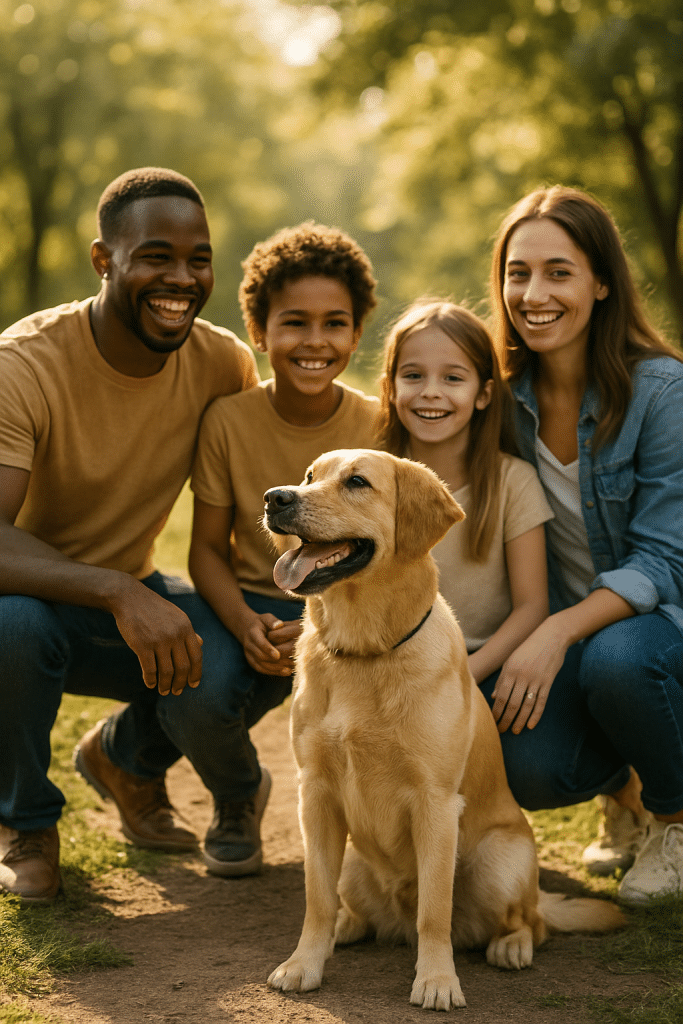Training your dog isn’t just about teaching “sit” or “stay.” It’s a journey that builds trust, respect, and a lifelong bond between you and your furry companion. Whether you’re welcoming a playful puppy or adopting an adult dog, dog obedience training is an essential part of pet parenting that ensures safety, happiness, and harmony in your household. As a pet owner or a family looking for guidance on breeds and training, knowing how to approach obedience training can feel overwhelming at first, but with the right tips and techniques, it becomes highly rewarding.
In this comprehensive guide, I’ll walk you through five proven dog obedience training tips that will make your training experience effective and enjoyable. From understanding the science behind training methods to tailoring approaches based on breed temperament, and from establishing consistent routines to leveraging technology for modern pet parenting, this article has got you covered. We’ll also delve into common challenges pet owners face and explore ways to overcome them with positive reinforcement and expert insights. You’ll come away feeling confident to embark on or elevate your dog obedience journey, knowing exactly what works and why.
Let’s jump right in and explore the foundations and best practices for successful dog obedience training.
Understanding Dog Obedience Training: A Foundation for Success
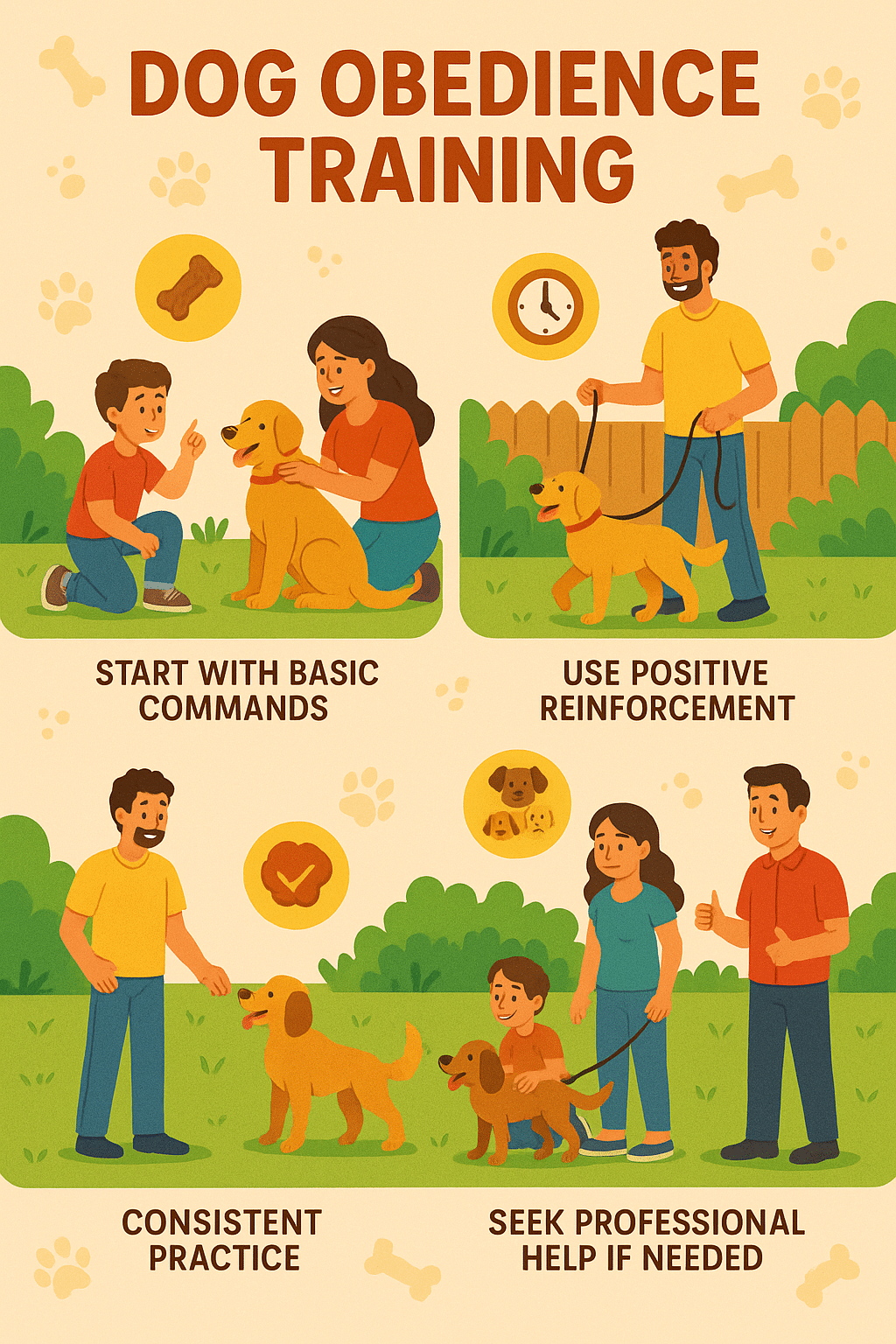
Before diving into commands and sessions, understanding what dog obedience training truly means sets the stage for success. At its core, dog obedience training involves teaching your dog to respond reliably to cues or commands while promoting positive behavior through clear communication. Without this foundation, your training could be confusing to your dog, leading to frustration or inconsistent results.
The Science Behind Positive Reinforcement Techniques
The gold standard in current dog obedience training is positive reinforcement, which means rewarding desired behaviors immediately to encourage their repetition. This technique contrasts sharply with aversive training methods that rely on punishment or negative stimuli, which can harm your dog’s trust and motivation.
Positive reinforcement can involve treats, toys, verbal praise, or petting. For example, a simple “sit” command followed by a tasty snack when your dog complies teaches them what you expect. Studies in animal behavior and psychology consistently show that dogs learn faster, retain behaviors longer, and enjoy training more when motivated by rewards rather than coercion.
Using positive reinforcement not only builds obedience but also strengthens the emotional bond, making your dog more eager and confident to learn new skills. For pet owners, adopting this humane, science-backed method creates a positive and lasting training experience for the whole family.
Role of Puppy Socialization in Early Training Stages
Starting obedience training isn’t just for mature dogs. The puppy socialization period—roughly between 3 to 14 weeks of age—is a critical window when your puppy forms impressions of the world around them. Proper socialization paired with obedience training during this phase can prevent many behavioral problems down the road.
Key Puppy Development Stages Impacting Training
- 3 to 8 weeks: Puppies learn social skills primarily from their littermates and mother. Early gentle human interaction helps them adjust to people.
- 8 to 12 weeks: This is the most sensitive socialization window. Exposing puppies to diverse environments, sights, sounds, and friendly animals helps them grow into well-rounded adults.
- 12 to 14 weeks: Fear periods may begin, where puppies become wary. Consistent positive experiences in training can build their confidence.
Failing to socialize puppies properly might lead to fearfulness, aggression, or behaviors that complicate obedience training.
Integrating Socialization with Obedience Training
Combining socialization and obedience training means incorporating commands like “come” or “stay” during playdates or walks in new environments. For example, while at a dog park, asking your puppy to sit and waiting calmly before play encourages self-control amidst distractions. This dual approach nurtures well-behaved, confident dogs who can follow commands, no matter the setting.
Getting Started with Dog Obedience Training at Home
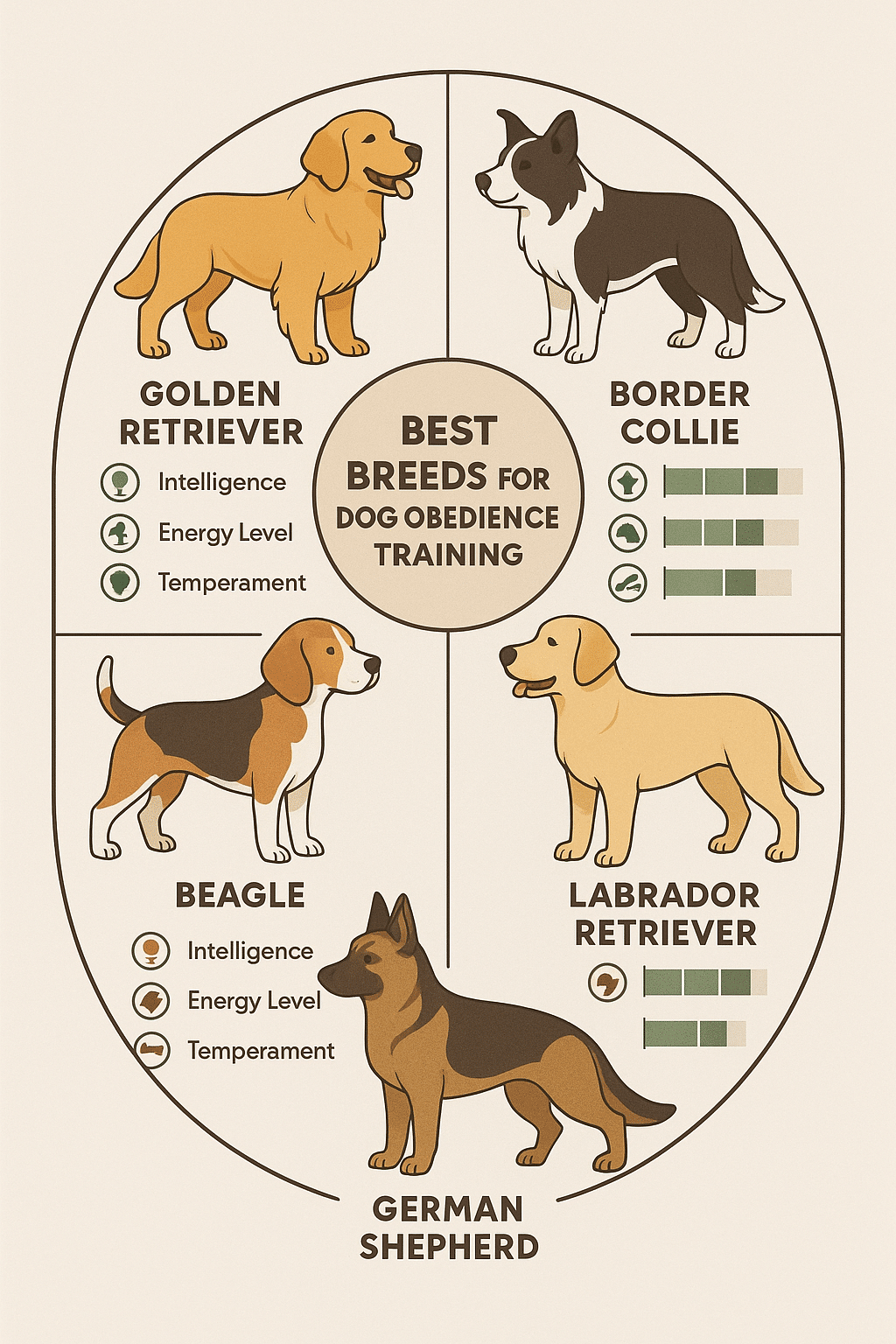
Embarking on dog obedience training begins in the comfort of your home, offering the ideal low-pressure environment. Here’s how to lay the groundwork effectively.
Essential Training Equipment and Tools for Beginners
You don’t need fancy gear to train your dog, but certain tools can make your efforts more successful:
- Treat pouch: Keeps rewards handy and your hands free.
- Clicker: A small device that makes a distinct “click” sound used in clicker training to mark desired behavior precisely.
- Flat buckle collar or harness: Choose based on your dog’s size and comfort for control during training.
- Leash: A 4 to 6-foot leash works best for close control.
- Soft training treats: Small, easily consumable, and highly motivating treats like freeze-dried liver bites or cheese work wonderfully.
Avoid choke chains or prong collars as they can cause harm and mistrust.
Step-by-Step Guide to Basic Commands (Sit, Stay, Come, Down)
Mastering basic obedience commands forms the backbone of safe, pleasant dog ownership.
-
Sit:
1. Hold a treat close to your dog’s nose.
2. Slowly move your hand upwards, causing their head to follow the treat and their bottom to go down.
3. Once seated, say “sit,” click your clicker or say “yes,” and reward.
4. Repeat several times per session. -
Stay:
1. Ask your dog to sit.
2. Open your palm toward them and say “stay.”
3. Take one or two steps back.
4. If your dog stays, return, click/praise, and reward.
5. Gradually increase distance and duration. -
Come:
1. Sit on the floor with your dog.
2. Say their name followed by “come” in an enthusiastic tone.
3. When they come, reward with praise and treat.
4. Practice in safe, enclosed areas initially. -
Down:
1. Start with your dog sitting.
2. Hold a treat at their nose then lower it slowly to the floor.
3. As their body follows, say “down,” reward once they lie down.
Establishing a Consistent Training Schedule
Consistency wins the day. Dogs thrive when they know what to expect and when.
- Train daily: Short, 5-10 minute sessions 2-3 times a day suit dogs’ attention spans.
- Pick predictable times: Morning, lunch, and evening training can integrate into your routine.
- End on a positive note: Always conclude sessions while your dog is successful, to keep them eager for next time.
Balancing Training Sessions With Daily Routine
Training mixes well with daily activities: command your dog to “wait” before meal times, practice “sit” at the door before walks, or reinforce “come” during play. Embedding training into everyday life supports faster learning and better obedience.
Choosing the Right Dog Obedience Training Classes and Trainers
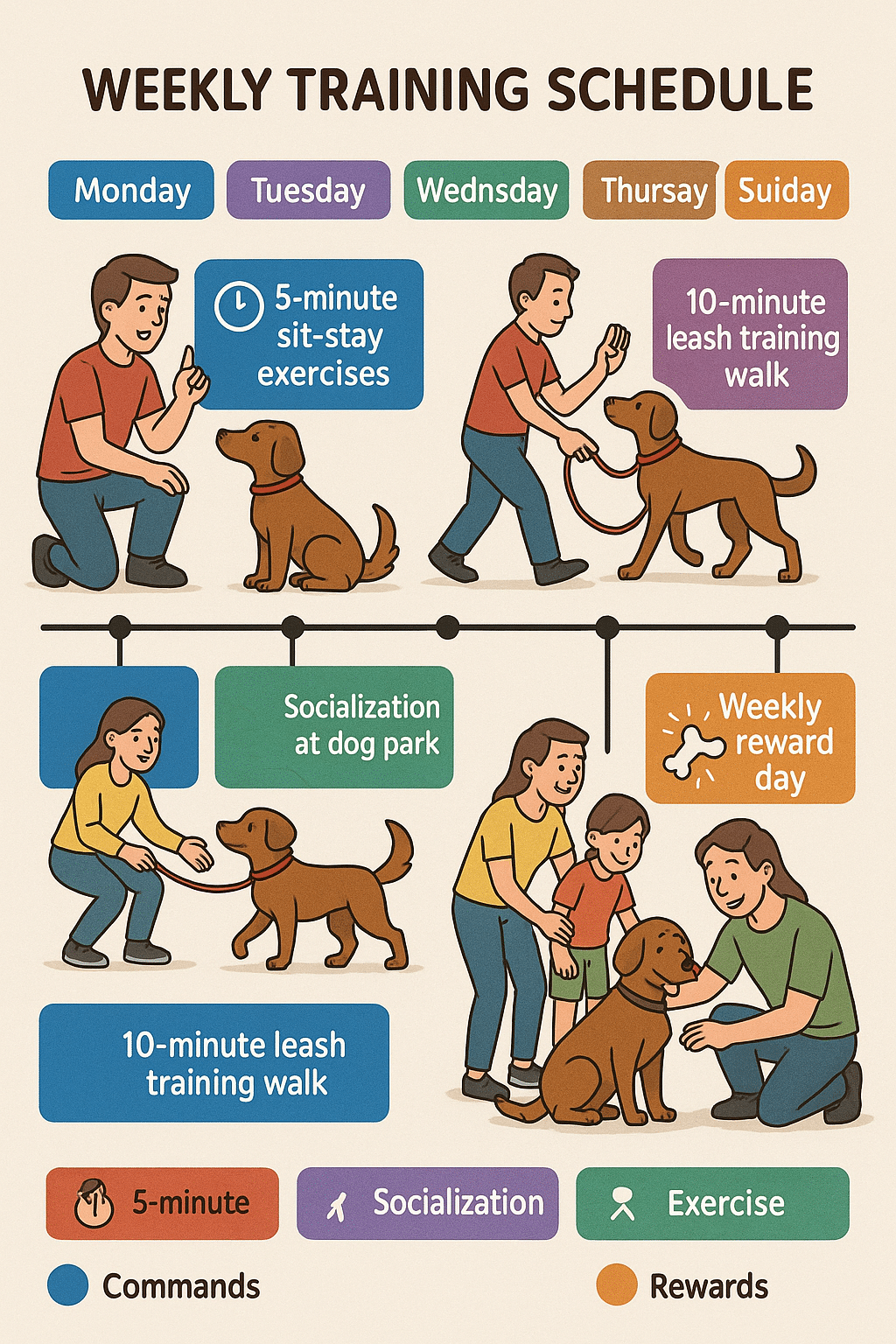
Sometimes, expert guidance can fast-track your dog’s progress. Here’s what every pet owner should know about picking classes and trainers.
Comparing Group vs Private Training Options
- Group classes: Cost-effective with socialization benefits. Great for puppies and beginners learning basic commands. However, distractions may challenge shy or easily overwhelmed dogs.
- Private training: Tailored sessions address specific behavioral issues, ideal for stubborn or frail dogs, or if you want focused, flexible instruction.
Combining both approaches often yields the best results.
Finding a Professional Trainer Near You: What to Look For
Look for trainers who:
- Use positive reinforcement techniques.
- Have certifications from reputable organizations such as the Association of Professional Dog Trainers (APDT) or International Association of Canine Professionals (IACP).
- Share clear training philosophies and progress metrics.
- Offer trial classes or consultations.
- Receive positive reviews from other pet owners.
Meeting trainers and asking about their approach before enrolling helps ensure a great fit.
Benefits of Enrolling in Structured Obedience Classes
Classes provide:
- Structured learning progression.
- Controlled environments with distractions.
- Socialization opportunities for dogs and owners.
- Consistency guided by professionals.
- Support networks of fellow pet owners for tips and motivation.
Enrolling your dog in an obedience class is an investment in their lifelong behavior and your peace of mind.
Tailoring Training Techniques to Different Dog Breeds and Temperaments
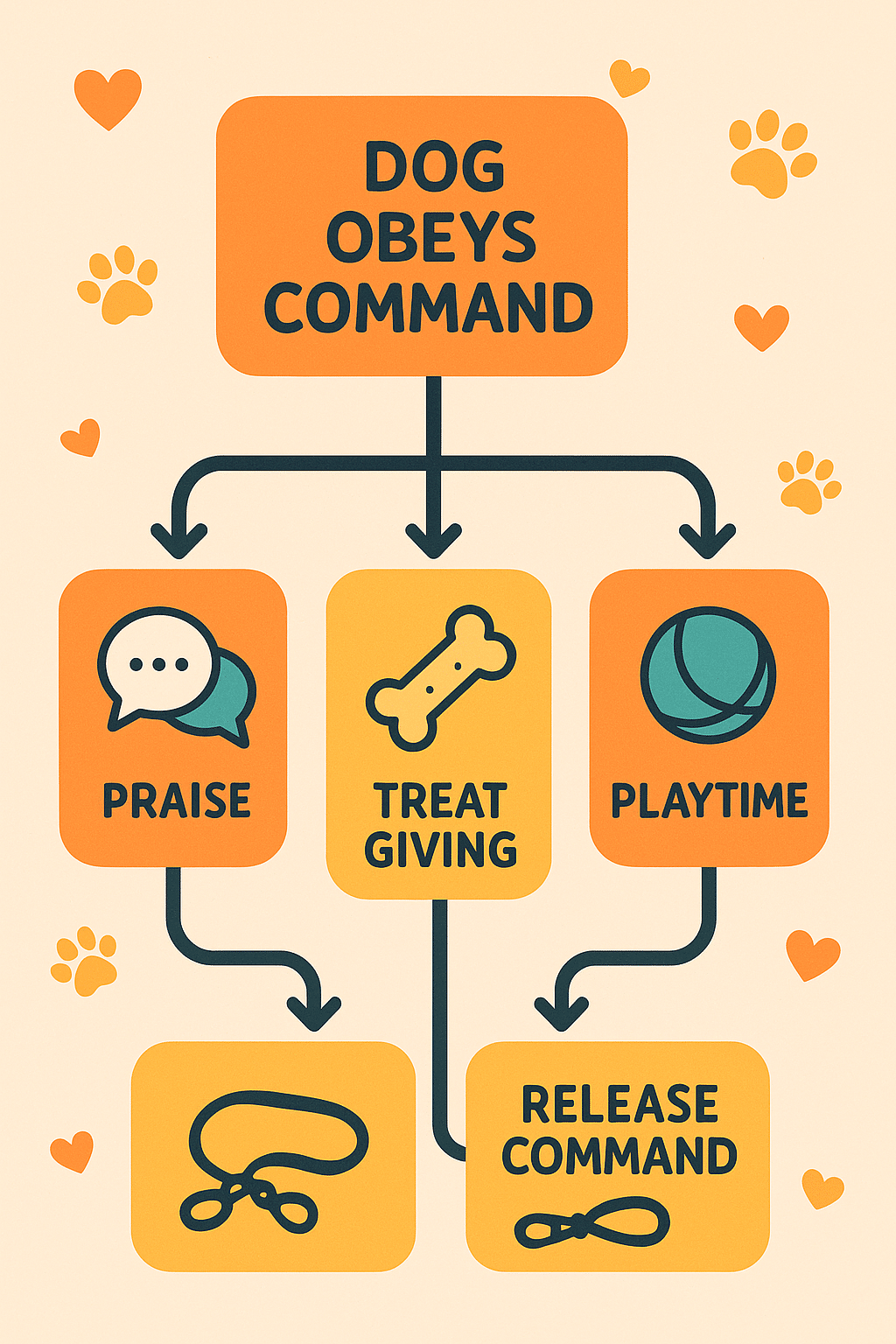
Not all dogs learn alike. Breed traits and individual personality hugely shape training strategies.
Breed-Specific Challenges in Dog Obedience Training
For example:
- Herding breeds (Border Collies, Australian Shepherds): Highly intelligent but can be easily bored. Training should be varied and include mental stimulation.
- Terriers: Independent and strong-willed; require firm but patient handling.
- Retrievers: Eager to please and food motivated; respond well to positive reinforcement.
- Hound breeds (Beagles, Bloodhounds): Scent-driven and sometimes distracted; training should incorporate scent as motivation.
Knowing your breed’s instincts helps customize methods.
Effective Strategies for Stubborn or Independent Breeds
- Keep training sessions lively and brief to maintain interest.
- Use high-value treats or play rewards.
- Avoid repetitive drills; introduce games and challenges.
- Show relentless patience—stubbornness isn’t defiance but preferred learning style.
- Celebrate small wins daily.
Small Apartment Living: Adaptations for Training Success
Apartment dwellers face unique challenges like limited space and noise distractions.
- Prioritize quiet commands indoors to avoid disturbing neighbors.
- Create small training zones using rugs or mats.
- Use a clicker or soft voice for commands to maintain calm.
- Invest in daily walks and outdoor play to burn off energy before training inside.
- Leverage interactive toys to supplement obedience practice.
Adjusting training environments is key to consistent progress.
Advanced Dog Obedience Training and Beyond Basic Commands
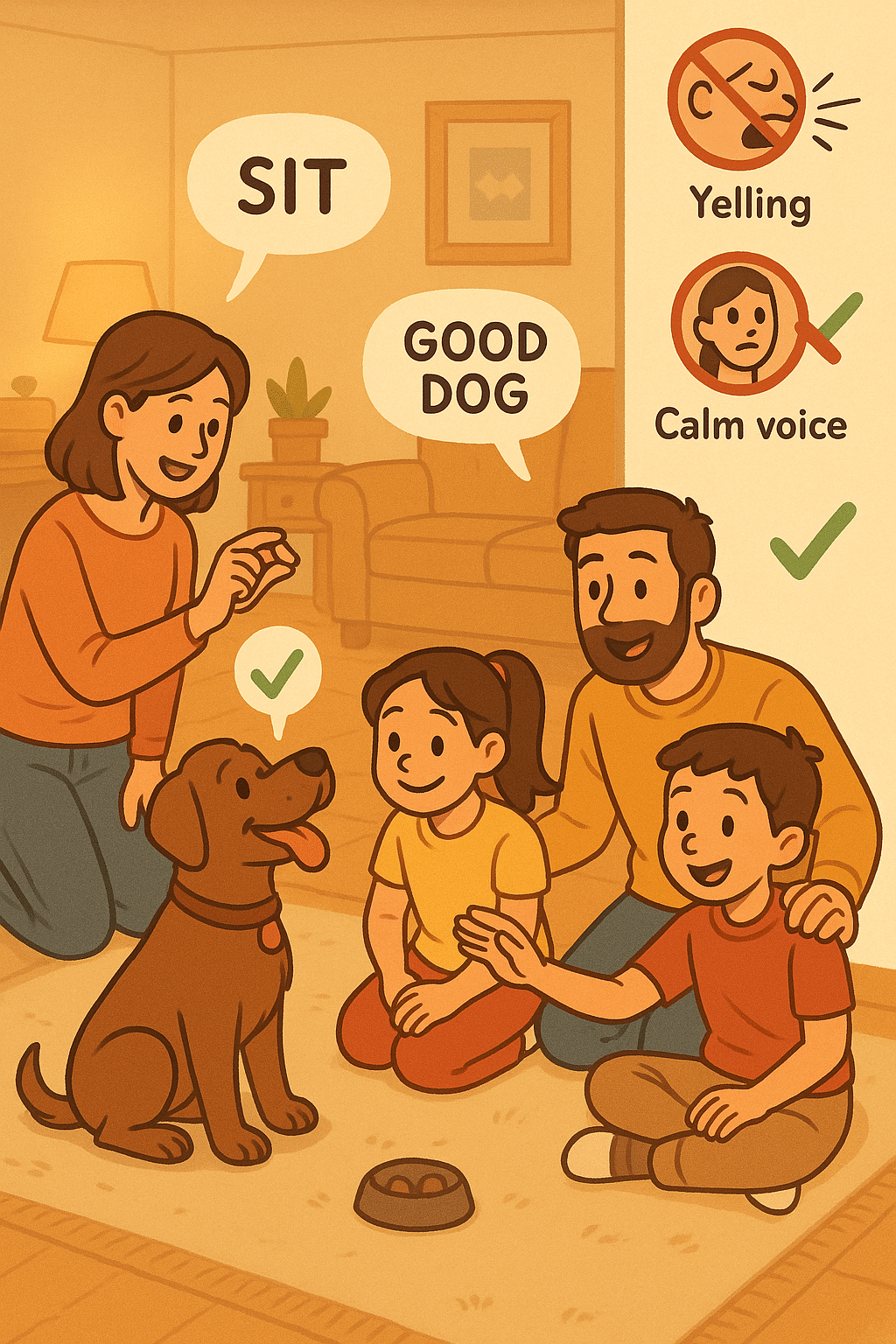
Once your dog masters the basics, it’s time to level up.
Introduction to Clicker Training and Its Advantages
Clicker training uses a distinctive sound (a click) to mark correct behavior instantly, bridging the gap between the behavior and reward. This precision accelerates learning and improves communication.
Benefits include:
- Clear, consistent feedback.
- Ability to teach complex behaviors.
- Fun for motivated dogs.
It’s a fantastic next step for dedicated pet owners.
Progressing Through Training Levels: Novice, Open, and Utility
Dog obedience competitions categorize training in levels:
- Novice: Basic obedience including sit, stay, heel.
- Open: Intermediate skills like retrieving, longer stays.
- Utility: Advanced commands and problem-solving exercises.
Even if competition isn’t your goal, mastering these levels sharpens your dog’s skills and your teamwork.
Preparing for Obedience Competitions and Trials
For families interested in competing, preparation involves:
- Consistent practice of required exercises.
- Working with a knowledgeable trainer.
- Fostering your dog’s motivation and focus.
- Acclimating to different environments and distractions.
This process deepens your bond and can be an enjoyable journey for both of you.
Overcoming Common Training Challenges and Behavior Issues
Training isn’t always smooth sailing. Here’s how to tackle typical obstacles.
Canine Behavior Modification Techniques
- Identify triggers (fear, anxiety, overstimulation).
- Use desensitization and counter-conditioning to change negative associations.
- Increase positive reinforcement during challenging moments.
- Avoid punishment-based responses which often worsen behavior.
Force-Free and Fear-Free Training Approaches
Prioritize your dog’s emotional wellbeing:
- Recognize signs of stress and adjust training pace.
- Use gentle guidance, rewards, and patience.
- Ensure training remains a rewarding activity, not a dreaded chore.
These methods build trust and long-term obedience.
Integrating Technology and Online Resources in Dog Obedience Training
In today’s world, technology offers excellent supplements to in-person training.
Online Training Programs for Busy Pet Owners
Programs like Zak George’s Dog Training Revolution, or Karen Pryor Academy provide videos and methods you can follow from home at your own pace. This flexibility suits busy families and allows repetition as needed.
Using Training Apps and Virtual Classes Effectively
Apps such as Pupford, Dogo, and GoodPup offer command tutorials, progress tracking, and even live video sessions with trainers. They provide:
- Convenient on-demand lessons.
- Community support.
- Motivational reminders.
For pet owners balancing busy lives, these tools keep training consistent and engaging.
Costs, Time Commitment, and Measuring Progress in Dog Obedience Training
Understanding the investment helps plan training well.
Understanding Financial Investment and Value of Training
- DIY home training costs mainly treats and basic equipment (~$30-$50).
- Group classes typically range from $100-$200 for 6-8 weeks.
- Private training sessions may cost $50-$120 per hour.
- Investing in professional training pays off by reducing costly behavioral problems and vet visits.
Tracking Training Progress and Setting Realistic Goals
- Use training journals or apps to log commands practiced and successes.
- Break training into manageable milestones.
- Celebrate achievements to maintain motivation.
- Understand progress can ebb and flow; patience is key.
Building a Lasting Bond: Communication and Rewards in Obedience Training
The heart of obedience training lies in communication and rewards that build mutual respect.
Enhancing Dog-Owner Communication Through Training
Learn to recognize your dog’s body language, signs of confusion, excitement, or stress. Tailoring training responses accordingly strengthens your connection. Speak calmly and clearly, and use consistent cues to avoid mixed messages.
Choosing Effective Rewards and Incentives for Motivation
Besides treats, use praise, playtime, or favorite toys as rewards. Rotate rewards to prevent boredom and keep your dog engaged. For example, after a successful “stay,” a quick tug game or fetch session can be more thrilling than a treat.
Maintaining Training Results Over Time
Even after your dog masters obedience, keep sessions part of your routine. Refresh commands regularly, introduce fun challenges, and adjust rewards as needed. This upkeep ensures reliable obedience and keeps your relationship lively.
FAQs
Q1: What are the best dog obedience training techniques for beginners?
A1: Beginners should focus on positive reinforcement techniques such as treats and praise, start with basic commands like sit and stay, keep training sessions short and consistent, and use clear, calm communication.
Q2: How can I start puppy obedience training at home effectively?
A2: Begin with socialization during key puppy development stages, use gentle positive reinforcement, focus on simple commands, and integrate training into daily routines gradually to build your puppy’s confidence and responsiveness.
Q3: What are the benefits of enrolling dog in obedience classes?
A3: Obedience classes offer structured learning, socialization opportunities, expert guidance, controlled distractions to simulate real-life challenges, and motivation through group learning dynamics.
Q4: How do I find the right dog obedience trainer near me?
A4: Look for trainers certified by reputable organizations using positive reinforcement, read reviews from other clients, request trial sessions, and ensure their training philosophy matches your values.
Q5: What training tips help with stubborn dog breeds?
A5: For stubborn breeds, keep training sessions engaging and brief, use high-value rewards, vary training exercises, practice patience, and celebrate incremental progress to keep your dog motivated.
Quick Takeaways/Key Points
- Positive reinforcement is the most effective, humane dog obedience training method.
- Early puppy socialization combined with obedience exercises prevents future behavioral issues.
- Consistent, short training sessions worked into daily routines yield the best results.
- Choosing the right trainer or class depends on your dog’s temperament and your goals.
- Tailor training tactics to your dog’s breed and living situation for maximum success.
- Advanced training like clicker techniques enhance precision and fun.
- Use technology and online resources to supplement busy schedules.
- Tracking progress and setting goals keeps motivation high and measurable.
- Force-free and fear-free approaches protect your dog’s emotional wellbeing.
- Maintaining training over time strengthens the lasting bond between pet and owner.
Conclusion
Dog obedience training is a rewarding journey that shapes your dog into a companion who’s safe, happy, and well-mannered. By applying these five proven dog obedience training tips, you’ll create a solid foundation rooted in positive reinforcement, consistent practice, expert support, and tailored strategies suited to your pet’s unique traits. Remember, training is not just about commands—it’s about communication, trust, and fun.
As you move forward, embrace patience, celebrate victories (both big and small), and keep your sessions engaging and loving. Whether you’re tackling puppy basics or advanced challenges, your investment in training establishes a lifelong bond that enriches every aspect of your family life.
Ready to get started or enhance your current routine? Commit to training with joy, and you’ll be amazed at how obedient and happy your dog becomes. Happy training!

